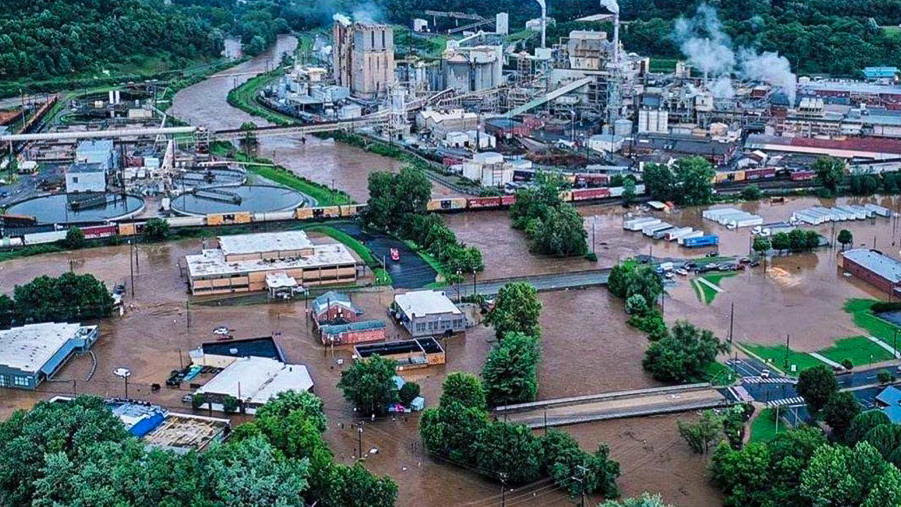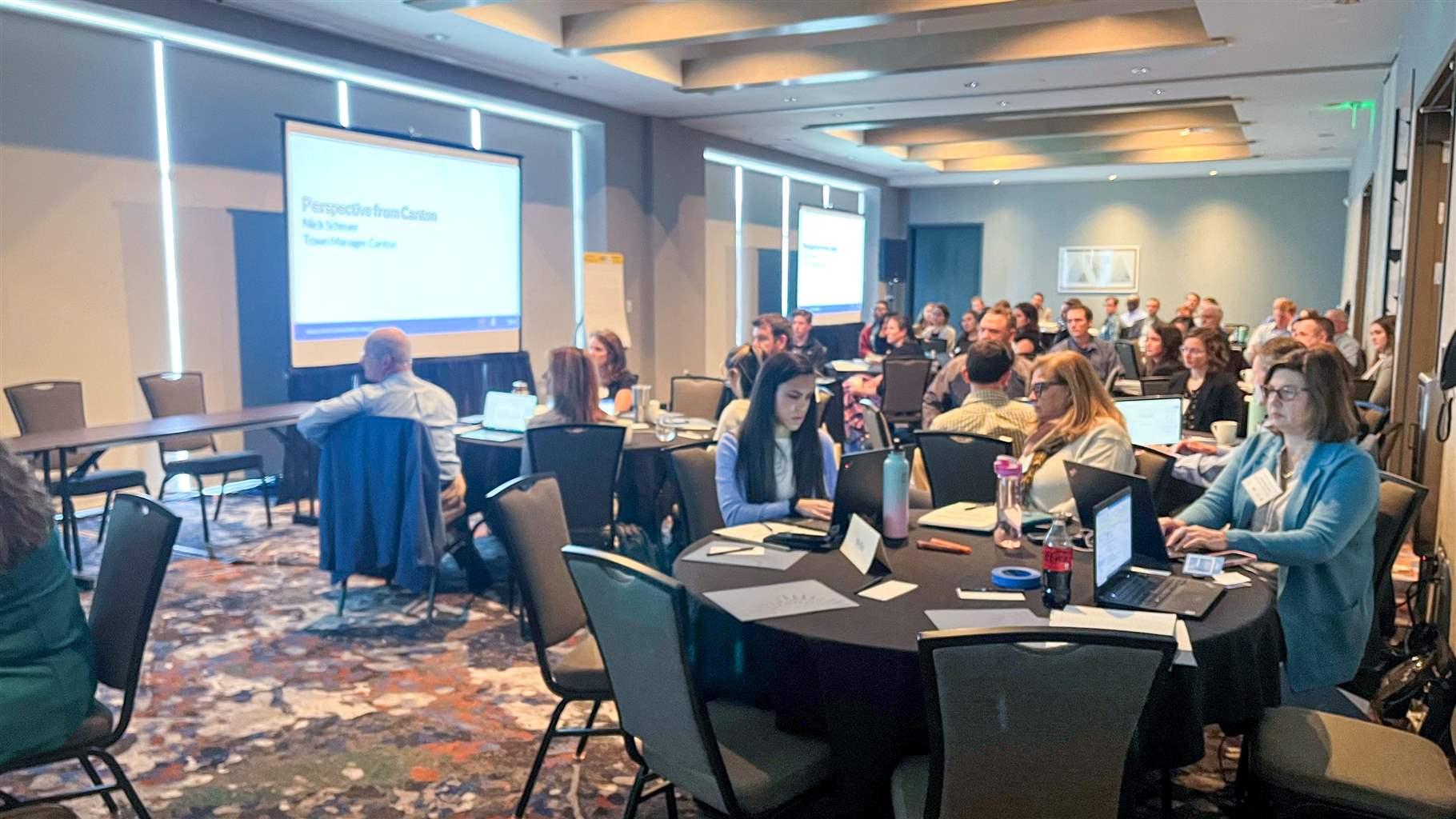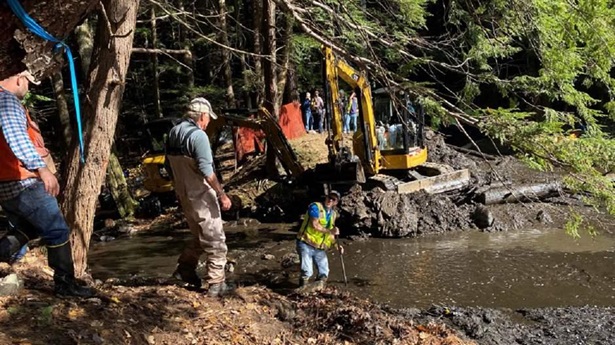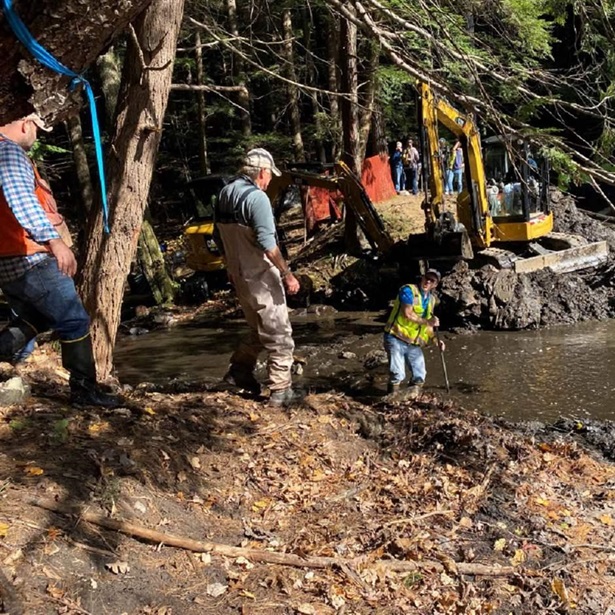Western North Carolina Works to Increase Resilience to Floods, Fire, and Landslides
Experts gather in Asheville to chart a path to preparedness
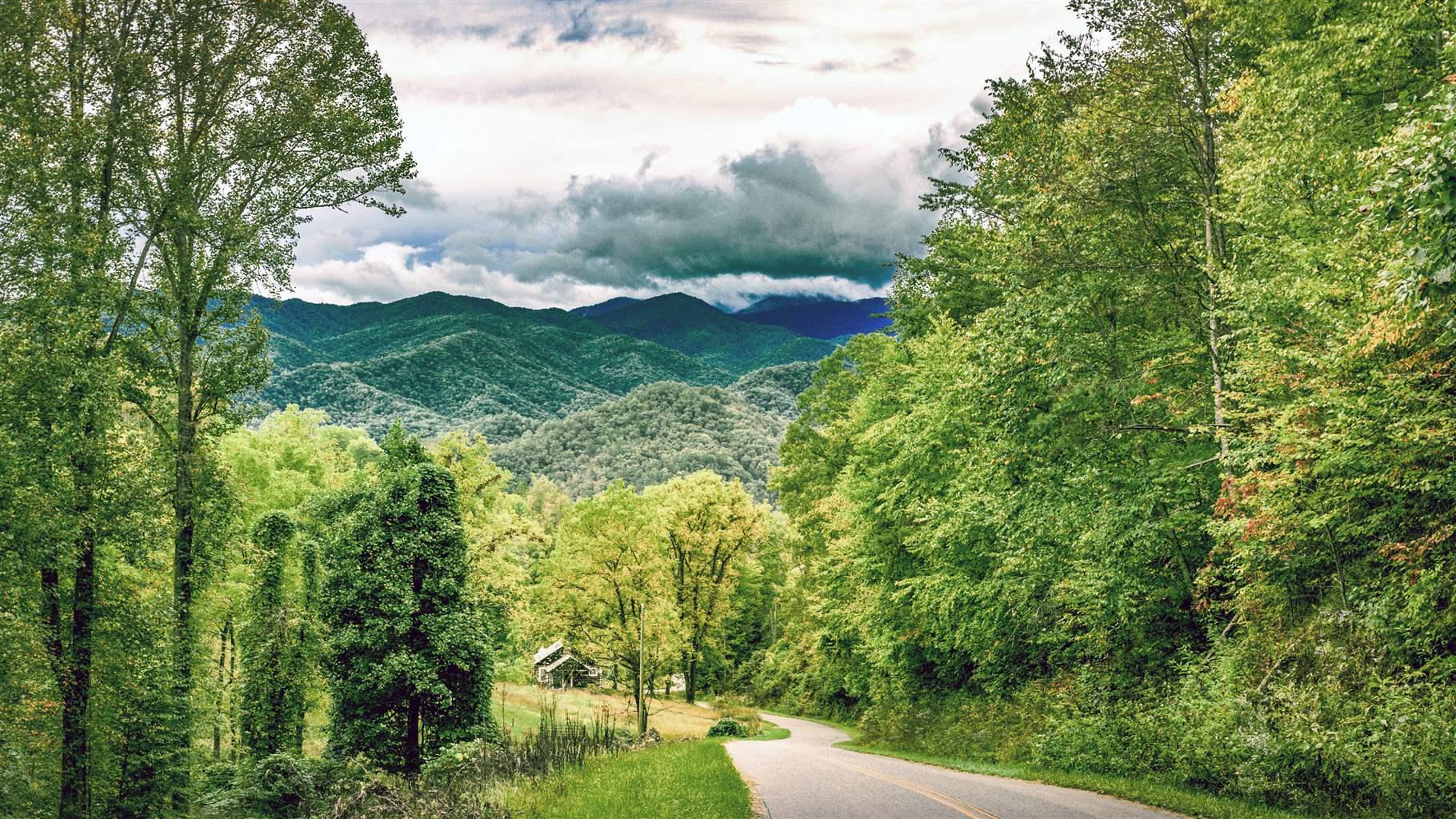
As western North Carolina continues on an economic and population growth trajectory, local officials there—in concert with their state and federal counterparts—are planning ahead to ensure that the region is adequately prepared for floods, wildfires, and other climate impacts. That was among the takeaways from an April 2023 symposium in Asheville, where key stakeholders charted a path to ensure a more resilient future for western North Carolina.
The Western North Carolina Resilience Symposium—hosted by The Pew Charitable Trusts, the North Carolina Office of Recovery and Resiliency (NCORR), the University of North Carolina-Asheville’s National Environmental Modeling and Analysis Center (NEMAC), and the national recovery and resilience organization SBP—connected participants from across the state and across disciplines to build a shared understanding of natural hazards that affect the region, learn from communities that are disaster-ready, and identify a path to resilience planning and action.
Building on resilience efforts guided by the 2020 North Carolina Climate Risk Assessment and Resilience Plan and reflecting on the impact of Tropical Storm Fred in August 2021—which killed six people, damaged or destroyed more than 250 homes, and caused over $18 million in damage in North Carolina—participants offered ideas for how to better plan for storms and mitigate natural disaster risk in western North Carolina, with an emphasis on how that risk probably will grow in coming years. Scientists, state agencies, regional planners, and researchers made presentations about the region’s persistent flood challenges, the interrelated risks of wildfire and landslides, and the intersection with social and economic issues.
There are more Cantons than Charlottes—and they have different needs
In opening remarks, Canton Town Manager Nick Scheuer shared photos and an account of the devastating impacts of Tropical Storm Fred on his small town, about 20 miles west of Asheville, and its 4,200 residents. The region’s small and rural communities are physically isolated by the mountainous landscape, long distances between communities, and limited road and broadband infrastructure. Residents and experts expressed concern that rural western North Carolina is not ready for another storm like Fred.
Participants who live in or work with small communities said many have a culture of self-reliance, with neighbors who know and help one another when homes are damaged and residents are stranded. But disaster recovery in such areas can also be a challenge, with limited local government capacity and less engagement with state and federal entities, all of which results in lower public awareness of risk and the resources available to address flooding hazards. Attendees also agreed that effective resilience planning in the region must be community-led and based on trust among communities, regional organizations, and state entities. Local stakeholders encouraged state and regional entities to meet communities where they are, use clear language, and listen.
A holistic approach to resilience considers housing, economic development, and equity
Because research shows that people with higher social vulnerability tend to bear a disproportionate brunt of climate impacts, resilience efforts should focus on communities where social and disaster risk overlap, said Appalachian State University accounting professor Tammy Kawalczyk. She said those efforts should address not only climate and natural hazards but also housing, economic development, health care, and other socioeconomic concerns. Participants agreed, expressing concerns about shortages of housing, especially affordable housing; access to health care, including mental health care; and uneven investment between urban and rural areas in western North Carolina. Meeting attendees suggested local and regional officials should strive to build a robust economy and good quality of life for residents—something they can do in partnership with state agencies and nongovernmental organizations.
Balancing healthy natural systems with economic development
Western North Carolina’s expansive and untamed mountains, forests, and rivers help to protect communities from some disasters by, for example, absorbing stormwater and limiting runoff. But in recent years, economic and population growth has spawned development that is both threatening the ecological health of the area and putting people in harm’s way.
For example, Asheville’s population grew by 13% from 2010 to 2020, driven in part by an uptick in digital nomads and seasonal residents. Visitors and part-time residents are often less aware of potential flood, fire, and landslide risks and can be more challenging to engage and educate.
Additionally, the Appalachian Mountains offer refuge for some wildlife and plant species that are shifting their habitats northward or to higher elevations because of climate change. Nature-based solutions, including conservation of open space and restoration of the natural flow of streams and rivers that have been dammed or diverted, can complement economic development and prevent building in flood-prone areas. Luke Etchison of the North Carolina Wildlife Resources Commission shared details on projects already underway to restore flood plains and improve waterway connectivity south of Asheville in Henderson County, with benefits to habitat and to communities.
Building on state and local action in western North Carolina
North Carolina’s academic institutions, regional planning organizations, and state-led mapping and planning initiatives are already positioned to support resilience in western North Carolina. Mary Roderick, project manager for the Land of Sky Regional Council’s Resilience Program, shared regional planning efforts across five counties to assess economic exposure to climate risk and identify threats to critical infrastructure and services. The Regional Council is also starting work on a watershed-based vulnerability and risk assessment with the goal of scaling up resilience planning and action across jurisdictions.
Recovery and resilience initiatives in eastern North Carolina following Hurricanes Florence and Matthew also provide models that officials in the western part of the state could emulate. NCORR worked with partners to launch two resilient communities programs: the Resilient Coastal Communities Program run by the North Carolina Department of Environmental Quality and NCORR’s own Regions Innovating for Strong Economies and Environment (RISE). Both programs have yielded detailed vulnerability assessments for eastern communities and prioritized lists of proposed resilience projects; 14 of those projects have secured funding and are being implemented. These tested models and lessons learned are similar to efforts in western North Carolina.
In the months since the symposium, NCORR has been consolidating the information gathered and looking at next steps to advance some of the ideas shared. The conversation that started in Asheville continues among practitioners and local leaders about how to best serve and support the region. These steps are important as communities across the country continue to see stronger and more frequent storms and as urgency increases for resilience measures to reduce the need for post-storm recovery efforts.
Kristiane Huber works on climate resilience with Pew’s U.S. conservation project.
